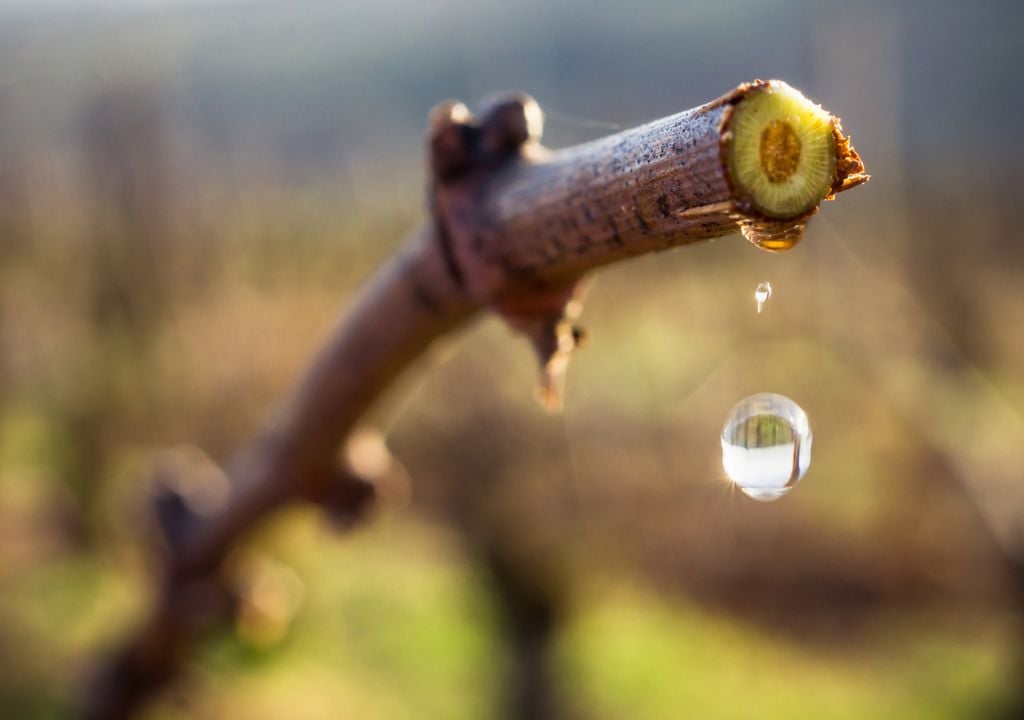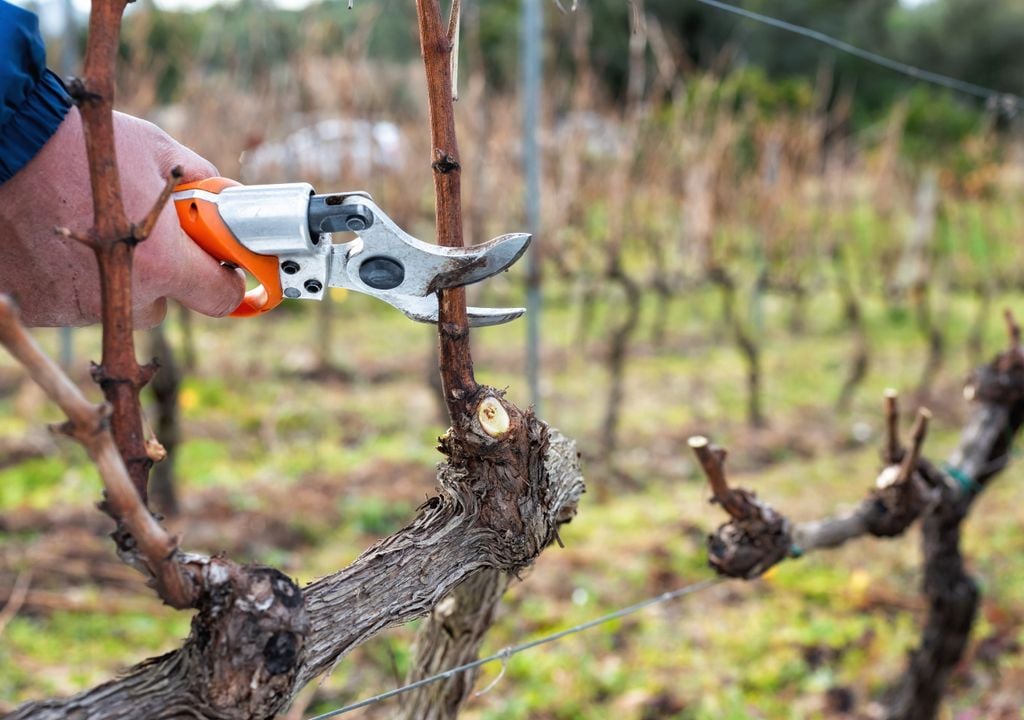What is the "weeping" of the vine? Learn everything about this phenomenon
As the month of March arrives, vine weeping begins in Spanish vineyards, a natural phenomenon in which the plant expels liquid through its pruning cuts during spring, a crucial factor for its growth.

Viticulture is considered the art of growing grapes for the production of wine, and it is a practice deeply rooted in Spanish history, as well as in the culture of numerous civilisations. However, behind the great wines that we enjoy, there is a fascinating natural phenomenon and above all crucial for the growth of the vine, and this is the famous weeping, also known as “bleeding” of the vine.
What is the ��weeping” of the vine?
Vine weeping, or bleeding, is a natural phenomenon that occurs during spring, specifically at the beginning of the plant's growth cycle. It is a completely natural phenomenon that consists of the exudation of liquid (sap) through pruning cuts in the trunks and branches of the vine.
This liquid, which can be clear or pink in colour, is a mixture of water and mineral solutions that the plant has stored during the winter, that is, during its vegetative stop, hence the importance of the accumulation of hours of cold during the winter so that the plant can make adequate and sufficient accumulation for its new cycle.
Why does the weeping of the vine occur?
The weeping of the vine has multiple causes and functions within the life cycle of the plant, and is a phenomenon, in addition to being striking to the human eye, of great importance in view of the life of the plant. In summary, this phenomenon originates from a confluence of factors.
Internal temperature regulation
During the winter, the vine accumulates a significant amount of water and nutrients in its tissues to survive the cold. As temperatures begin to rise in spring, this stored water becomes excess that the plant needs to remove to avoid overload and regulate its internal temperature.

Metabolism awakening
The weeping of the vine marks the beginning of active growth of the plant after its period of winter dormancy. This process is closely related to the awakening of its metabolism, which allows it to initiate photosynthesis and absorb nutrients from the soil for its vegetative development and the formation of grape clusters.
Protection against pathogens and pruning
The exudation of fluid during vine weeping also plays a crucial role in protecting the plant against various pathogens and diseases. By expelling excess water and nutrients, the vine removes any dead or potentially harmful material from its tissues, thus reducing the risk of infection and disease.
#Lagrimas de #vida.
— Bodega Puente de Rus (@BodegaPuenteRus) April 12, 2017
Todas las #primaveras se produce el fenómeno del #lloro de la #vid, la savia vuelve a correr por las #venas de la plant pic.twitter.com/zOPaOBp3vg
Nutrient cycle
Furthermore, the weeping of the vine is essential for the nutrient cycle within the vineyard. The liquid released by the plant from the pruning cuts contains a variety of essential minerals, such as potassium and nitrogen, which are reintegrated into the surrounding soil, enriching it and preparing it to support the healthy growth of the vine and the quality of the grapes. This is an insufficient phenomenon for soil mineralisation, but it helps its mineral growth.
Implications in viticulture
In the field of viticulture and wine production, the weeping of the vine has important implications.
Optimal time for pruning
Vintners should take vine weeping into account when planning their pruning practices. Making cuts during this period can affect the amount of liquid exuded and therefore the health and vigour of the plant.
Impact on vine performance
While vine weeping is a natural and beneficial process, prolonged excess exudation can negatively affect plant performance and grape quality. It is therefore important to control this phenomenon to ensure the most correct balance possible.

Reflections
The weeping of the vine, along with other environmental and geographical factors, contributes to the concept of terroir, which refers to the unique characteristics that influence the growth of grapes and, ultimately, the distinctive character of wine produced in a specific region.
We can say therefore that the weeping of the vine is a fascinating natural phenomenon as well as essential for the growth and health of the plant. In addition to its physiological function, it has a significant impact on viticulture and wine production, highlighting the complexity and connection between nature itself and the art of growing grapes.








